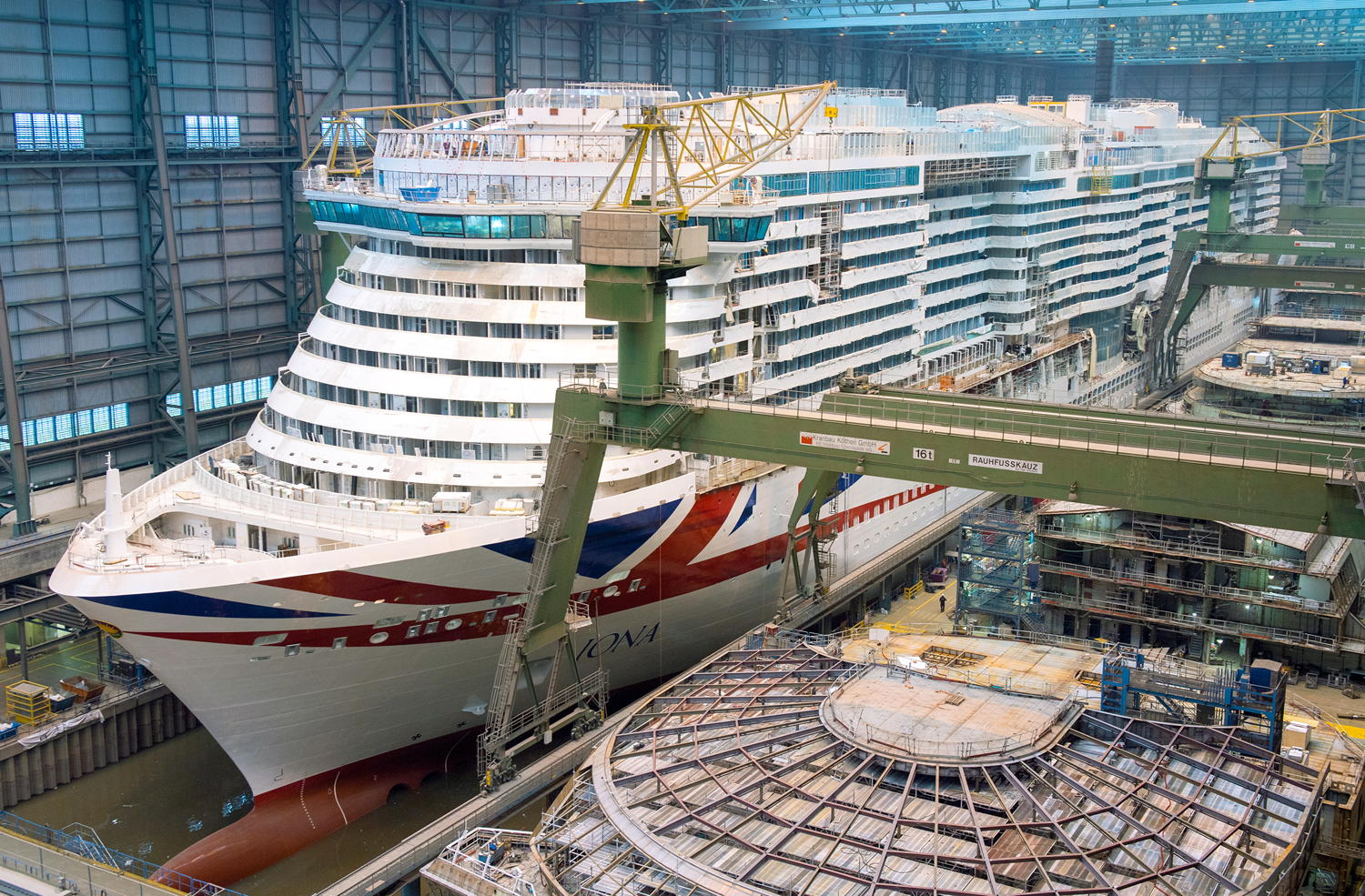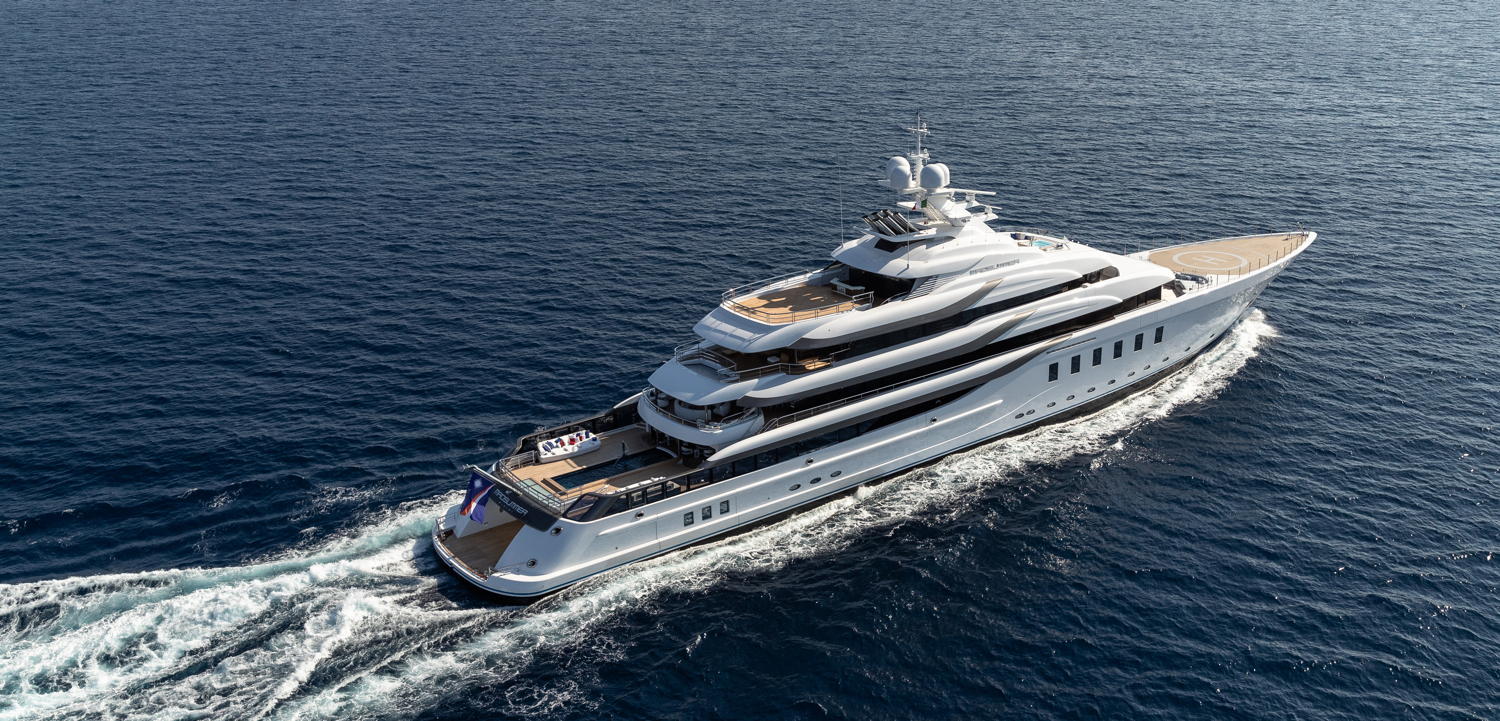German yards successfully continue to take a stand in the global shipbuilding market. The players
invest in personnel and infrastructure
There is no doubt that the challenges in global shipbuilding competition have not necessarily diminished for German shipyards. The markets[ds_preview] for special purpose ships and other niches are increasingly being targeted by others, especially from Asia, but also by European competitors. Nevertheless, the German industry is still able to assert itself, the label »Made in Germany« still carries weight. According to the German Shipbuilding and Ocean Industries Association (VSM), in seven of the last eight years, domestic yards acquired more orders than newbuildings were delivered.
The German shipbuilding business continues to be dominated by cruise ships, yachts, RoRo freighters and naval units. They are joined in the order book by other special ships such as an icebreaker for Russia to be built by Pella Sietas in Hamburg or two multipurpose vessels to be delivered by Abeking & Rasmussen. The »Spotlights on German Shipbuilding Projects« on the following pages provide evidence of this portfolio.
Investments on the agenda
As a matter of fact, all yard managers are aware of the fact that these niche markets are not reserved for them – there is a continued need to take action. The Industry is highly dependent on its own investments, including
research and development, although additional federal innovation and financing programmes exist. Modern facilities, logistics centres (Meyer Werft), innovative production methods – one example being a 3D printing facility at Abeking & Rasmussen – and last but not least investment in personnel are high on the agenda.
The Meyer Group with its German locations in Papenburg and Warnemünde (Neptun shipyard) is continuously looking for qualified personnel and hiring new employees, hundreds of new jobs have been created. The MV Werften Group with sites in Wismar, Warnemünde, Stralsund and Bremerhaven has also been expanding its workforce since its takeover by the Asian Genting Group, thus creating lots of jobs in the respective regions.
The focus of all these initiatives and projects is clearly on maintaining a strong position in the global market with innovations, high-quality products and modern approaches. Despite all the prophecies of doom, the German industry continues to succeed in defending its market share.
Consolidation creates and maintains jobs
In a comprehensive review, the structural changes in the industry should not be disregarded. With takeovers and changes of ownership, consolidation continues. Such developments have also left their mark on German shipbuilding in the past year.
At the beginning of October, Tennor Holding, a globally active investment company of German investor Lars Windhorst based in the Netherlands, took over the all shares of crisis-ridden Flensburger Schiffbau-Gesellschaft (FSG) from the Norwegian group Siem. Over the past five years, the Scandinavians have been the main customers for the shipyard. However, Siem intends to continue working closely with Tennor.
Another transaction typical for the change in the German shipbuilding industry was the sale of the operational shipyard business by the Bremerhaven entrepreneur Dieter Petram to the Rönner Group, also based in the port city. The transaction comprises the Bremerhaven-based dock company Bredo (Bredo Dry Docks), German Dry Docks (GDD) and German Ship Repair (GSR) with around 400 employees. In announcing the sale, the Petram family emphasised that for the sake in the interests of the employees and the future of all companies, they had decided »to give the shares in a trustworthy hand rather than selling them to any bigger corporation.«
The Lürssen Group continued to pursue its expansion course in 2019. It acquired the insolvent Elsfleth shipyard, which went through huge difficulties in the wake of misconducts surrounding the refurbishment of the German navy’s sail training ship »Gorch Fock«. The Lürssen Group takes over all of the approximately 130 employees.
All in all, the German shipyards see themselves »on track« despite some obvious challenges. Facing tough competition especially from China, the shipbuilders are demanding more political commitment and an aligned European strategy. One point of criticism is that public clients are turning to foreign shipyards instead of promoting the domestic industry as recently seen with orders given to Dutch yards. These comprise ferries, fire fighting boats and four new navy vessels. However, the Federal Government considers itself to be on the right track with its support policy, as it is explained in more detail to HANSA (pages 16-19).


















